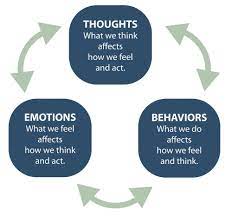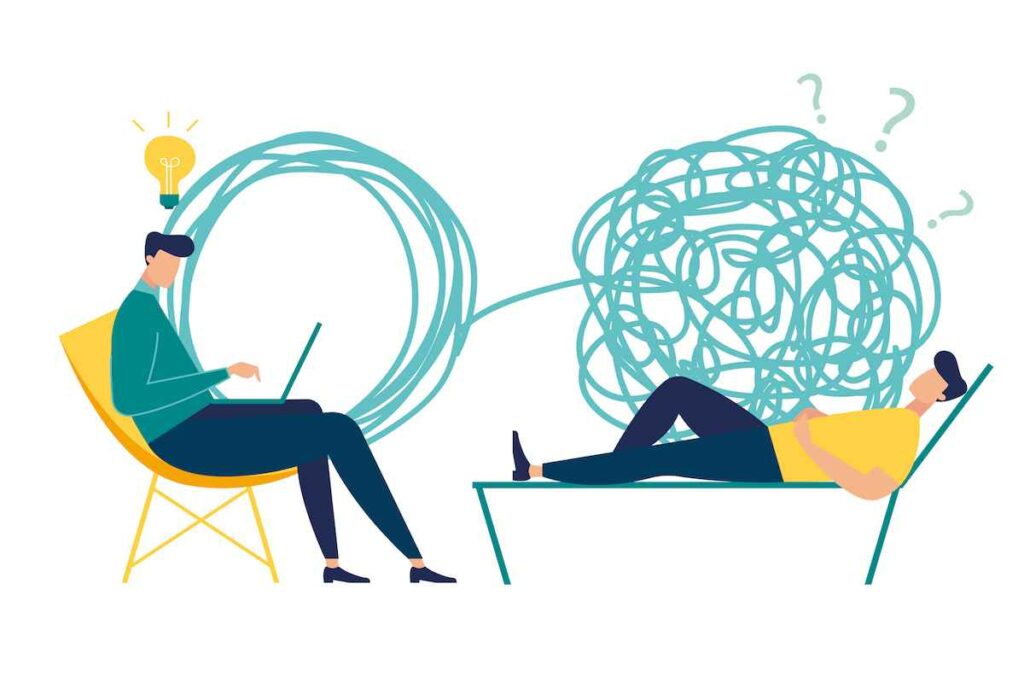There are many different types of therapy available to people who are struggling with mental health issues. Two of the most common therapies are cognitive behavioral therapy (CBT) and ERP therapy. So, what’s the difference between them? And which one is right for you? In this blog post, we will discuss the differences between CBT and ERP therapy, as well as help you decide which one is best for you!
Contents
What Is CBT Therapy?

CBT, or Cognitive Behavioral Therapy, is a type of talk therapy that has been around for decades. This type of therapy focuses on how an individuals’ thoughts, feelings, and behaviors affect each other and ultimately impact their quality of life. It is used by many professionals to help people manage emotions, develop coping strategies for stress, anxiety, and depression, and improve relationships.
CBT works by helping individuals identify and challenge unhealthy thoughts and beliefs, replace them with more adaptive thought patterns, and then practice using these new approaches in their daily lives. It is based on the idea that our thoughts influence our emotions and behavior, so changing our thinking patterns can lead to a healthier outlook. The goal of CBT is to help individuals recognize their negative thought patterns and replace them with healthier, more realistic ones.
CBT can be used in combination with other therapies such as psychotherapy or medication for maximum effectiveness. It is also part of a broader approach that might include lifestyle changes, diet and exercise interventions, mindfulness practice, relaxation training or other strategies.
What Is ERP Therapy?
ERP therapy stands for Exposure and Response Prevention. It is a form of Cognitive Behavioral Therapy (CBT) that helps people manage their anxiety by facing fearful situations and objects, and then learning how to cope with them without resorting to unhealthy behaviors like avoidance or ritualistic behaviors such as compulsive checking, washing, counting, etc. ERP can help people change their habits, and eventually their thought patterns, so they can feel more in control of their anxiety.
ERP involves exposing the person to whatever they are afraid of while concurrently preventing the individual from engaging in any rituals or compulsions. This allows them to gain mastery over the fear and observe that nothing bad happens as a result of their exposure. It helps them to develop new ways of thinking about the fear and gain confidence in their ability to manage it.
ERP is a collaborative process between the therapist and patient, with input from both parties on how best to approach each situation and what can be done differently. The therapist guides the patient through each step of the process.
How Is ERP Different From CBT?
ERP and CBT are two different types of mental health treatments that can help people manage their mental health issues. While both are forms of psychotherapy, they differ in how they approach the problem.
CBT (cognitive behavioral therapy) is a type of psychotherapy that focuses on changing problematic thoughts, behaviors, and emotions. It aims to teach people how to think and respond differently in order to reduce symptoms. CBT typically involves goal setting, problem-solving, and skill building that helps individuals become more aware of their emotions, thoughts, and behaviors.
ERP (exposure and response prevention) is a type of psychotherapy that works by gradually exposing someone to a feared situation or object and teaching them how to manage the distress that is created. This is done by gradually confronting their fears, identifying triggers, and developing coping strategies that prevent them from engaging in maladaptive behaviors. It is often used as a treatment for anxiety disorders and OCD (obsessive-compulsive disorder).
In general, ERP is more focused on developing coping strategies for managing anxiety, while CBT focuses on identifying and changing maladaptive thoughts and behaviors. ERP often involves facing fears directly in a controlled setting, while CBT focuses on helping people modify their thoughts and behavior in order to reduce symptoms. Both are evidence-based treatments that can be effective when used in combination. Many mental health professionals use a combination of the two approaches in order to achieve desired results.
Which Therapy Is Best For You- ERP Or CBT?
Ultimately, it is important that individuals work with their healthcare practitioner to decide which approach is best for them and that they have access to the right resources to help them manage their mental health issues. Each person has different needs and goals, so it is important to find the right treatment plan that works for them.
No matter what type of therapy a person chooses, taking steps to improve mental health will help them lead a happier and healthier life. Professional support can make all the difference in managing mental health problems successfully. It’s important to remember that seeking help is a sign of strength and not a sign of weakness. Seeking mental health treatment can help individuals find the tools they need to manage their mental health issues and live fulfilling lives.
How Long Does ERP Therapy Last?
ERP therapy usually consists of weekly one-hour sessions, and it typically takes 12 to 16 weeks for patients to complete the program. That said, some people may require more or less time depending on their particular needs. After the initial treatment program is completed, some people may choose to continue with occasional “booster” sessions. These sessions may be used to help maintain progress and handle any new triggers or situations that arise. Additionally, people may choose to have regular “check-in” sessions with their therapist to discuss their progress and determine if any additional therapy is necessary. While the length of ERP treatment varies from person to person, most people find that sticking with the program leads to a significant decrease in their anxiety symptoms. Ultimately, ERP is an effective way to help reduce the intensity of your fears and take back control of your life.
Conclusion
It may be concluded that cbt erp therapy is an effective treatment for managing anxiety and depression. It is a safe, structured and evidence-based approach to treating these disorders. CBT ERP helps patients gain insight into their thoughts and behavior patterns, develop healthier coping skills, understand their fears, learn how to face their fears, and ultimately lead more productive lives. The combination of cognitive restructuring and exposure therapy provides a powerful and effective way to treat anxiety and depression.
CBT ERP is not the only treatment available for anxiety and depression, but it can be a very useful tool in helping patients manage their symptoms. It is important for patients to talk with their mental health care provider about their individual needs before beginning any treatment plan. With the right treatment plan in place, CBT ERP can be a powerful tool for helping people with anxiety and depression to lead more productive lives.
For more information and guidance, please contact OCD Mantra. If you have any queries regarding OCD treatment, ERP therapy experienced therapists at OCD Mantra can help: Book a trial OCD therapy session


